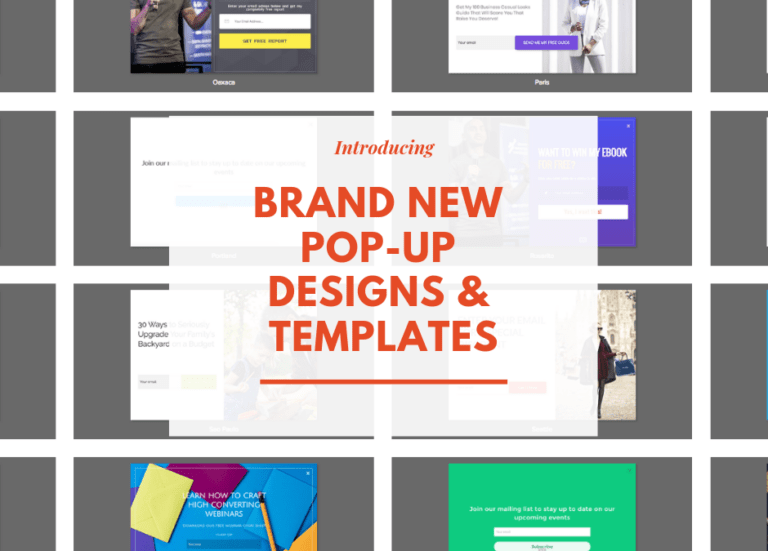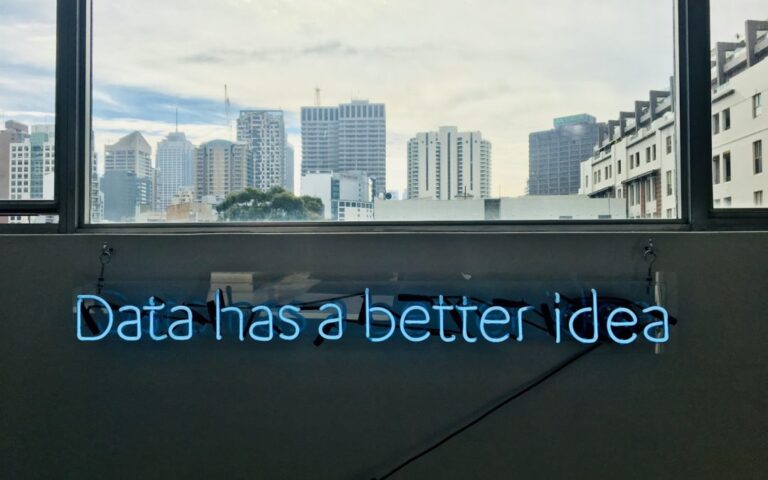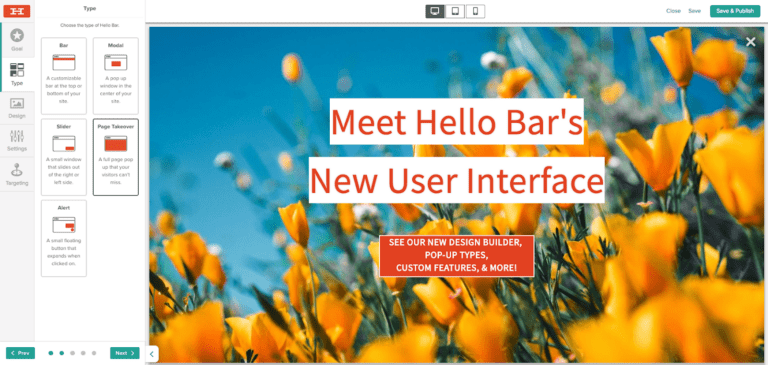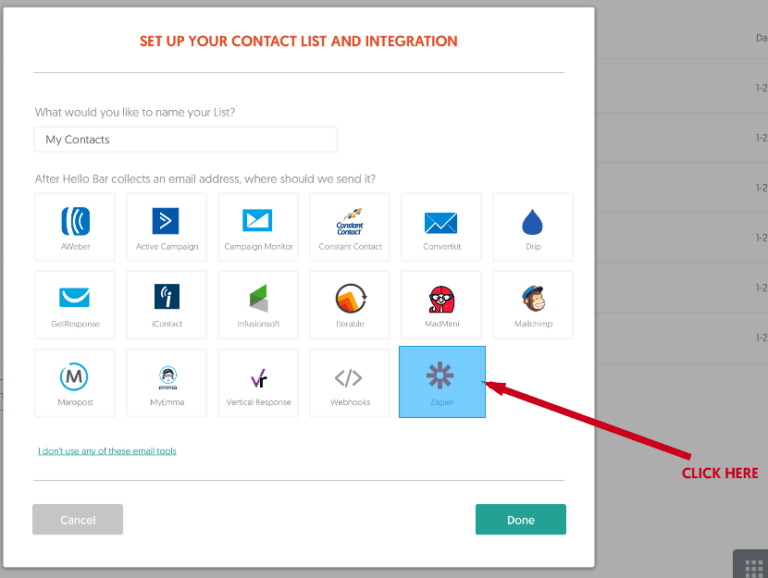Hello Bar Inline: A New Tool to Add CTAs to Blog Posts
I hope you enjoy this blog post. If you want Hello Bar to grow your leads, click here.
Author:
Andrei Gonzales
Published
July 23, 2024
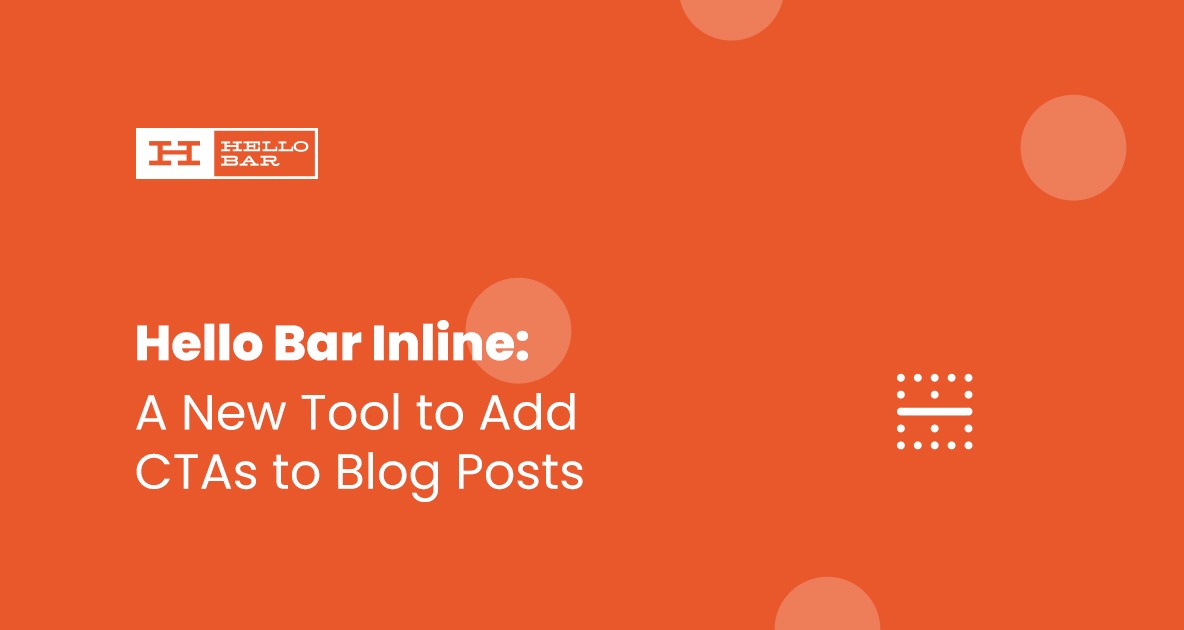
Hello Bar has a longstanding history of exceeding customer expectations and offering solutions that people need. And we’ve done it again!
We’re talking about our latest feature—Hello Bar Inline.
This is a feature that allows you to add lead-capture forms and CTAs to your blog posts and other content. We don’t mean a top banner or a form on the sidebar, but actual inline forms that are placed within your content.
You can tailor these to match your content’s topic and context and place them throughout your content. This makes your CTAs feel like native content, which tends to drive more engagement and conversions.
So, what exactly is Hello Bar Inline, how can you use it, and why did we decide to come up with this feature?
You’ll find all these answers and more in this in-depth article. Let’s get started.
Why We Built Hello Bar?
Back in 2012, it was really hard to build a website. There weren’t endless website creation tools and making simple edits to a website was difficult and time-consuming.
Back then, a friend of mine owned a fast-growing digital design and development agency called Digital Telepathy (later renamed Telepathy and acquired by Service Now). At the time, the agency’s clients often asked them to add a way to make announcements on their websites.
Ecommerce companies wanted to announce that they had cool new products for sale. Software companies wanted to let their customers and prospective customers know that they introduced new features. Thought leaders wanted to give updates on upcoming events or new books or articles they were pushing out.
And, well, there wasn’t an easy way to do that.
Back then, you would have to get a developer to add something to the site to make such announcements. Or, you would have to create a new blog post.
So, Hello Bar was originally created to enable website owners to quickly inform their audiences of new features, updates, events, and anything else they could think of.
Hello Bar was named that because it was a simple widget that went at the top of the page. It was easy to add to a site, easy to see, and beautifully designed. And, it immediately went viral.
Tim Ferris added a Hello Bar. Seth Godin added a Hello Bar. Eric Ries added a Hello Bar. Ecommerce companies added one. Hundreds of thousands of blogs added one. And, pretty soon there was a Hello Bar everywhere you looked.
Over the years, Hello Bar became well-known and plenty of copycats popped up. We were flattered (and, at times, annoyed) that so many companies tried to copy what we were doing. And, through that, we stayed committed to one thing…to help great companies and entrepreneurs build better relationships with their website visitors.
In our attempt to enable companies to engage their website visitors in newer and better ways, we introduced several types of popups, with different placements on a web page.
Fast forward to today, and we now enable companies globally to place a small bit of code on their website and turn their visitors into email subscribers, customers, leads, social followers and so much more.
In addition to Hello Bars, our customers can now simply and affordably add popups and forms on their page in various locations. We have top bars, bottom bars, corner units, and many more. And, we have continued to focus on ensuring that Hello Bar is still simple, affordable, and fun to use.
We also own a few other products and believe that content is the best way to grow any business online.
In fact, a few years after Hello Bar was created, Neil Patel got involved with Hello Bar. If you don’t know Neil, just type “Internet Marketing” in Google and you will quickly learn all about him. Neil has built an empire by helping companies around the world start and grow. And, a big part of that has been helping them learn and apply SEO and content marketing to their businesses.
But, just creating content is not enough. A lot of companies create content online, many even create good content. There’s no shortage of companies that know how to leverage content to get a steady stream of organic traffic to their websites.
While creating good content is a great way to grow your business online, we noticed that people were still struggling to turn their site visitors into customers, leads, and followers.
By adding Hello Bars, bottom bars, and corner units to their websites, many such people saw an immediate lift in conversions and results. We love seeing our customers do this. However, we also felt that we could help our customers be more successful and that’s why we decided to launch Hello Bar Inline.
Why We Built Hello Bar Inline
We used to own a native ad platform and we learned how well native experiences convert. What we mean by native experiences is those experiences on websites that look and feel like the content themselves and drive action.
For example, Taboola and Outbrain (and others) offer native advertising solutions in which the ads look and feel like the content itself. These native experiences are “polite” while being engaging and they drive excellent click-through rates.
A lot of our customers wanted better ways to convert site visitors into leads, customers, subscribers, and followers. We heard them and we started brainstorming on new features we could introduce to achieve that.
After much thought and work, we decided to create a native way for our customers to easily insert calls to action directly “inline” within blog posts and page content.
Just like making announcements on a webpage was a difficult task back in 2012, adding calls to action within blog posts and articles is still difficult to do today. So, we decided to change that.
Introducing Hello Bar Inline. A tool that allows people to add CTAs within their articles that look like native content.
Website owners can now insert calls to action within the body of their articles to drive more email subscribers, customers, and followers.
It’s simple. It’s native. It’s Hello Bar Inline.
What Is Hello Bar Inline?
Hello Bar Inline is a simple but powerful tool to add native feeling calls to action directly within blog posts and articles. After installing the Hello Bar script into a website, Hello Bar Inline can add one or many calls to action to an article, blog post, or webpage.
This helps you generate more leads from your website or blog content and is crucial to your lead-generation strategy.
Let’s understand this with the help of an example.
Let’s say that your name is Jane and you own a company called “Jane’s Kitchen Designs.” You work with homeowners to design amazing kitchens that are beautiful and incredibly functional. You are talented at what you do, get rave reviews from your customers, and get good referrals.
However, your business performance goes up and down and you are finding it hard to grow further. 18 months ago you started working with an SEO agency and that agency taught you to create great content for your website. You started writing articles about great kitchen design.
You have created a couple of articles per month since you started and those articles have helped your website to attract more and more visitors. In fact, your visitors have gone up by about 200% but until 6 months ago you were generating very few leads.
At that time, you learned about Hello Bar and added it to your website. Your Hello Bar automatically helps you with leads for people looking for great kitchen design. And now, you want to increase your leads even further. This is where Hello Bar Inline comes in.
Using Hello Bar inline, you can now add calls to action when somebody reads through your article. You can target your messaging to match the content of your article and place those calls to action throughout your article in a native and non-intrusive way.
Let’s say that you are writing an article about “The 10 biggest kitchen designs of 2024”. Within that article, you can now place inline calls to action throughout the article. Between paragraph breaks, you can add a call to action to “Get a free design quote to make your kitchen the trendiest in the neighborhood”.
You include lead capture fields and use Hello Bar’s templates and features to match this CTA to your article design. A few paragraphs down the page, you insert another call to action to “download a guide for designing the perfect kitchen for you” and use that lead magnet to capture leads for further lead nurturing.
Throughout the article you insert 4 calls to action—each native; each matching the article’s content.
That’s the power of Hello Bar Inline. You can now add calls to action directly within your articles and pages to engage your audience and drive them to take a desired action.
What Can Hello Bar Inline Be Used For?
Hello Bar Inline can be used for adding any call to action to your articles, blog posts, and web pages. Here are some examples.
- Add a lead magnet to your articles: If you have great white papers or ebooks that have helped you convert your site visitors into customers, you can ask people to download them by adding CTAs to your articles. You can customize each inline unit to match the content of an article to increase your conversion rates.
- Feature top products on an ecommerce site: Place inline widgets to feature top products within relevant content and drive your audience to specific product pages.
- Increase your revenue as an affiliate marketer: If you are an affiliate marketer, you can place inline units within your articles to feature products you promote. You can add multiple inline units throughout your articles to increase conversions and earnings.
- Drive more leads as a service provider: If you are a service provider, inline calls to action can be very powerful. Let’s say you are a tax advisor who has written an article on the top tax tricks for 2024. You can add different CTAs to ask readers to get a tax consultation or hire your services to turn them into customers.
Really, Hello Bar inline can be used for thousands of different purposes.
From increasing ecommerce sales and driving more conversions to getting more followers for your social media and so much more. Because they are native, flexible, and easy to add, you can increase your conversions and immediately drive growth for your business.
How To Get Started With Hello Bar Inline
Getting started with Hello Bar Inline is incredibly easy and affordable.
Here is the step-by-step process you need to follow.
- First, head to Hello Bar and create an account.
- Once you have created an account, be sure to add the Hello Bar script to your page so you can start adding Hello Bar units.
- You will then need to upgrade to one of Hello Bar’s affordable paid plans. These plans pay for themselves quickly by helping you to convert more of your traffic.
- Next, Create a new “pop-up” and then, “Choose Your Goal” from the list provided.
- Now, choose “Inline Embed” to start designing your inline unit.
- After that, a dashboard will open where you can design your inline unit and add the required fields and messaging.
We’ll discuss the design aspects of creating an inline unit using Hello Bar, in the next section.
Designing a Hello Bar Inline Form
In this section, we’ll cover some important aspects of designing forms using Hello Bar Inline. This includes the step-by-step process and some design tips to help you get the best results.
Step-By-Step Process for Designing an Inline Form Using Hello Bar
Follow these step-by-step instructions to create engaging forms using Hello Bar Inline.
1. Choose a Template
The first thing you need to do when designing an inline form using Hello Bar is to choose a template. Based on the goal you selected in the previous step, you’ll find numerous options to choose from.
For each goal, you can create various types of inline forms. For example, if your goal is to collect site visitors’ email addresses, you do that in many ways.
Here are a few examples:
- Ask people to take a quiz and provide their email address to get the results.
- Seek feedback and get them to fill out a survey using a survey platform, with email address included as one of the fields.
- Promote gated content, such as ebooks and whitepapers, which people can access by giving their email addresses.
- And many more!
Hello Bar offers various templates to cater to these different scenarios. Here are some examples.
Choose a template that best meets your needs and start customizing it.
2. Add or Modify Form Fields
The next step is to customize the template and add or remove form fields, depending on your requirements.
Do note that some form fields will be fixed, depending on your goal. For example, if your goal is to collect email addresses, then you can’t remove the email form field as that’s the primary purpose of your inline form.
You can easily add or remove all non-necessary form fields. Here’s how:
- Go to the “Input Fields” dropdown menu in the design tab and select the fields you want to add to your form.
- Add the message you want to add to your chosen field. For instance, if you select a multiple-choice question, then add the question and the multiple answers people can choose from.
- Rearrange the various form fields as you like, by simply dragging and dropping them in the form.
- Change the headline and other content.
- Include your logo, brand colors and fonts, and other branding elements.
Here are the various design customization options you’ll get.
Preview the final design and customize it till it’s ready to use.
3. Select Where to Display the Form
Now that your inline form is ready, you need to decide where you’ll place it within your content.
We don’t just mean which page on your website, but also where on a particular page.
Don’t worry! It’s not that technical and you don’t need any expertise to do it.
Here’s the simple process:
- Go to the left-hand menu and choose the placement as “After selected element.”
- Then, go to the page and the section after which you want to place the form. Right-click and select “Inspect page.”
- Click on the arrow icon on the top-left, select the element, and you will find the code for that element. Copy the code and come back to your Hello Bar dashboard.
- Paste the code in the CSS selector field and you’re done.
4. Choose the Contact List
So far, we’ve discussed the process of designing an inline form and selecting its placement. But what will happen to the leads that you generate from your inline forms?
You’ll need to send them to a specific contact list, right?
Well, Hello Bar Inline helps with that as well.
Simply go to the “Conversion” menu on the left sidebar and choose a contact list.
You should also plan for what message you want to show once a site visitor fills out your inline form.
For example, if they subscribed to your newsletter, you could say “Thank You for Subscribing.”
Decide what message you want to display and add it in the field that says “Default message,” which is right above your contact list selection field.
5. Preview and Publish the Inline Form
Lastly, preview your form and all the elements and publish it.
Design Tips for Creating High-Converting Inline CTAs and Forms
Here are some tips you should follow to design engaging and high-converting forms using Hello Bar Inline.
Keep Your Inline Forms Short
Whether it’s inline forms or any other type of popup or form, the golden rule is to keep it short and simple. The reason is that the easier it is for someone to fill out a form, the higher their chances of doing so.
Make it convenient for your site visitors to fill out your inline forms by keeping them limited to necessary form fields. If you want to capture leads, names and email addresses are probably all you need for your email lead nurturing campaigns.
Always Add Your Brand Colors and Elements
This is another important design tip for creating high-converting popups and forms, whether inline or otherwise. Consistently use your brand colors, fonts, etc. to reinforce your brand image and improve brand recall.
You can use any number of lead-generation strategies, but you should keep your branding consistent. This helps build a strong brand identity and is more important than any short-term results you get from your lead-generation campaigns.
Give Incentives to Boost Conversions
Using offers and discounts to collect email addresses is one of the most effective ecommerce lead-generation strategies.
However, it’s neither limited to ecommerce brands nor to specific types of popups that aim to boost sales conversions.
You should provide people with an incentive to sign up for your newsletter, download an ebook, enroll for a webinar, or any other action you want them to take.
The incentive need not be an offer or a discount but can be as simple as listing the benefits of taking a desired action.
For example, if you’re promoting an online course to generate leads using inline CTAs, mention what it will cover and why people should enroll in it.
Best Practices for Hello Bar Inline
Adding Hello Bar Inline to your pages is a simple and powerful way to convert more of your site visitors into customers, followers, and leads. Here are some best practices to follow when using Hello Bar Inline.
- Add multiple calls to action: Add multiple calls to action to your articles, blog posts, and lead-capture pages. How many depends on how long these pages and articles are. We recommend adding an inline unit every 750-1,000 words. So, if your articles are usually 3,000 words, you can add 3-4 calls to action.
- Test different calls to action: We recommend testing different calls to action throughout your articles and pages. For example, you can add a simple email capture unit and test that against a lead magnet that asks people to download an ebook. You can track the performance of each in-page unit and optimize it based on the results.
- Get in the habit of adding inline units as you publish content: We recommend adding in-page CTAs each time you write an article or blog post. It’s quick and easy to do and you can customize the messaging in the units to match the content of your articles.
- Test designs: Create units that match the native look and feel of your articles. Match the colors and font style and test that unit. Then, test another unit that provides more contrast in color and see if that works better or worse. Keep testing till you find what works best for your audience.
It goes without saying, that once you capture leads using these inline forms, nurture them via email marketing or other lead-nurturing tactics.
What Is Next for Hello Bar Inline?
Hello Bar Inline is a great tool for adding calls to action to your articles. And, we have big plans for evolving our inline features. Some of our ideas include:
- Enabling people to add inline shopping widgets.
- Allowing people to add videos to their inline units.
- Adding additional features for affiliate marketers to leverage inline for earnings growth.
- Adding additional design templates.
That said, we want to hear from you about what you think would make Hello Bar Inline even better. You can do that by:
- Emailing us at support@Hellobar.com with your ideas and requests.
- Adding your ideas to Hello Bar’s Nolt board and voting on what additional features you would like to see next.
Hoping to hear from you and work on new and exciting ideas to make Hello Bar Inline the best product in its category.
FAQ
Q1. What is Hello Bar?
Hello Bar is a popup builder tool that you can use to create different types of popups and forms for engaging your site visitors.
You can use it to create various types of forms, such as bars, sliders, modals, alerts, and page takeovers. Its newest feature is the ability to add inline forms to blog posts and articles.
Q2. What is Hello Bar inline?
Hello Bar Inline is the latest popup type that we offer through our popup builder platform. It allows you to place CTAs and lead-capture forms within your blog or page content, instead of the header or footer sections.
These inline units look and feel like native content, driving more clicks and conversions.
Q3. Why should I use Hello Bar Inline?
You should use Hello Bar Inline if you want to drive more conversions through your website content. You may have multiple forms and popups placed throughout your website and they may be generating leads for you.
However, if you feel that you want to drive more conversions from your blog posts, not just key landing pages, then that’s where Hello Bar Inline can help.
You can use it to generate leads from your blog content and educational web pages by placing forms and CTAs within the content. Since these look and feel like native content, your site visitors are more likely to engage with them than your regular header and footer forms.
Q4. How can I get the best results from using Hello Bar Inline?
Here are some tips to help you get the most out of Hello Bar Inline:
- Always match the content and design of your inline CTAs to match the content on the page where you’re placing them. This will ensure they look like native content and drive more conversions.
- Place at least 2-3 inline units to increase your chances of capturing leads from your content. You can add more for longer pieces of content. However, don’t just rely on a single CTA for an entire article or page.
- Complement your strategy by using different popups and forms, placed strategically throughout your website. Apart from inline forms, also consider header and footer forms, popups triggered by specific user actions, and more.
Follow these tips to maximize your return on investment (ROI) from your website lead-generation strategy.
Q5. How much Does Hello Bar Inline cost?
Hello Bar Inline is one of the many types of forms and popups that you can create using our popup builder. There are no separate charges for using it and you can access it with your regular Hello Bar subscription.
Hello Bar currently offers a free plan and three paid plans. With the free plan, you can create popups without paying anything for up to 5,000 views. After that, you must switch to a paid plan.
Here are the details of the paid plans that we offer:
- Growth: $39 per month for up to 50,000 popup views/mo
- Premium: $69 per month for up to 150,000 popup views/mo
- Elite: $129 per month for up to 500,000 popup views/mo
So, pick a plan that suits your needs and start using Hello Bar to create inline ads, banners, sliders, and other popups and forms to capture leads from your website to grow your email list.
Conclusion
From the beginning, our mission at Hello Bar has been to help companies and entrepreneurs grow.
Hello Bar Inline is another step towards that mission. Hello Bar Inline is easy to add, flexible, and effective. We look forward to seeing how our customers use Inline and continue to wake up each day finding new ways to help you grow.

